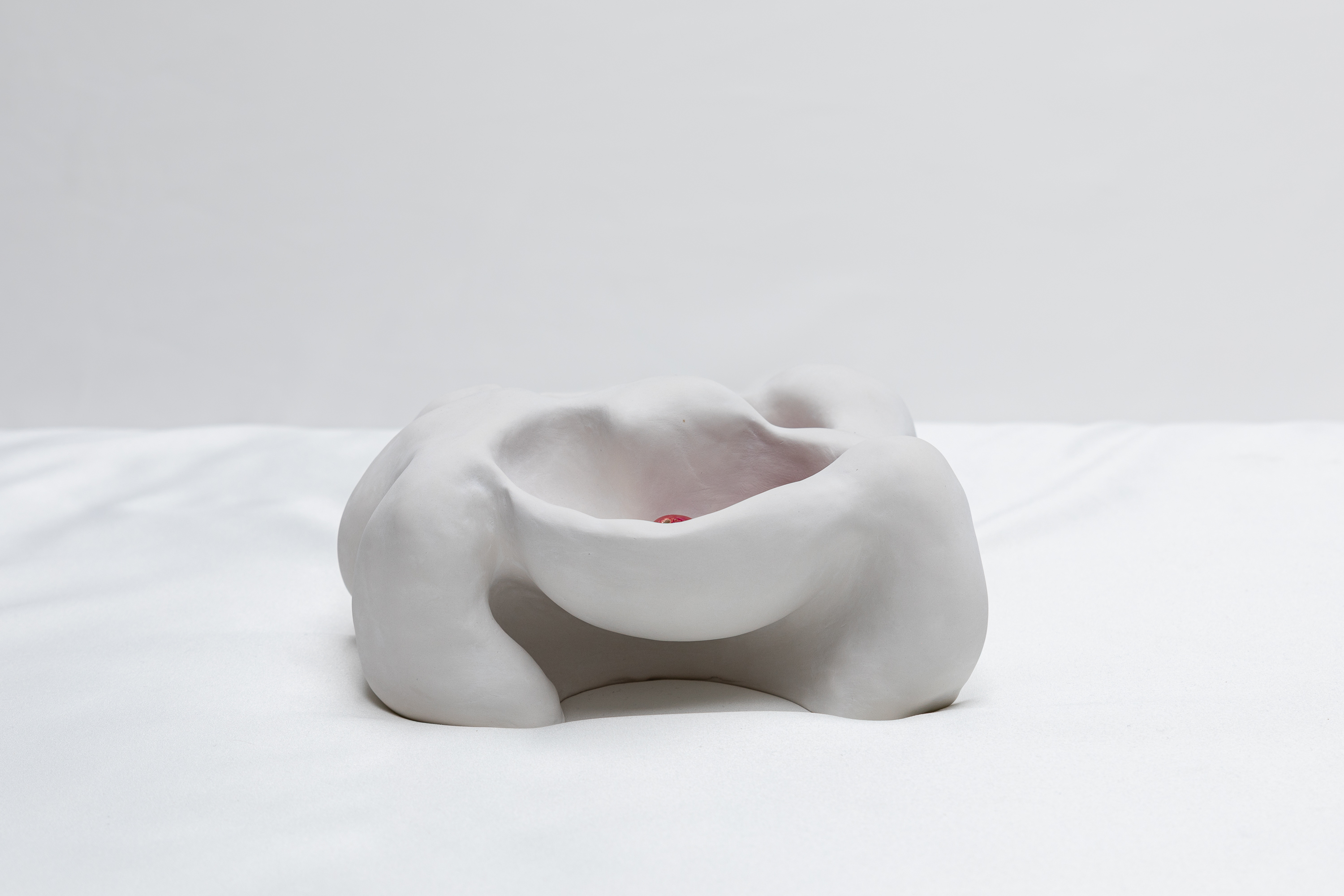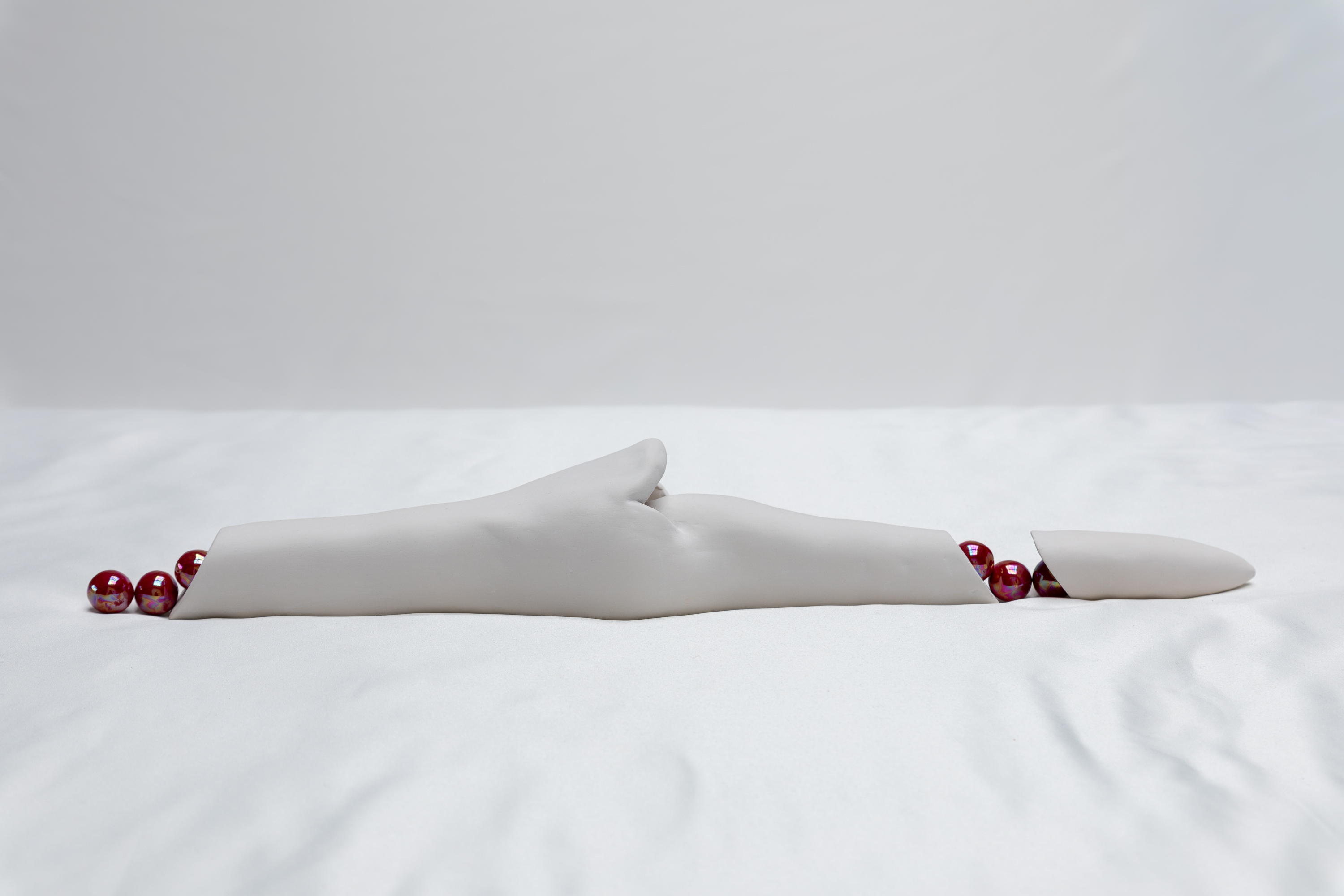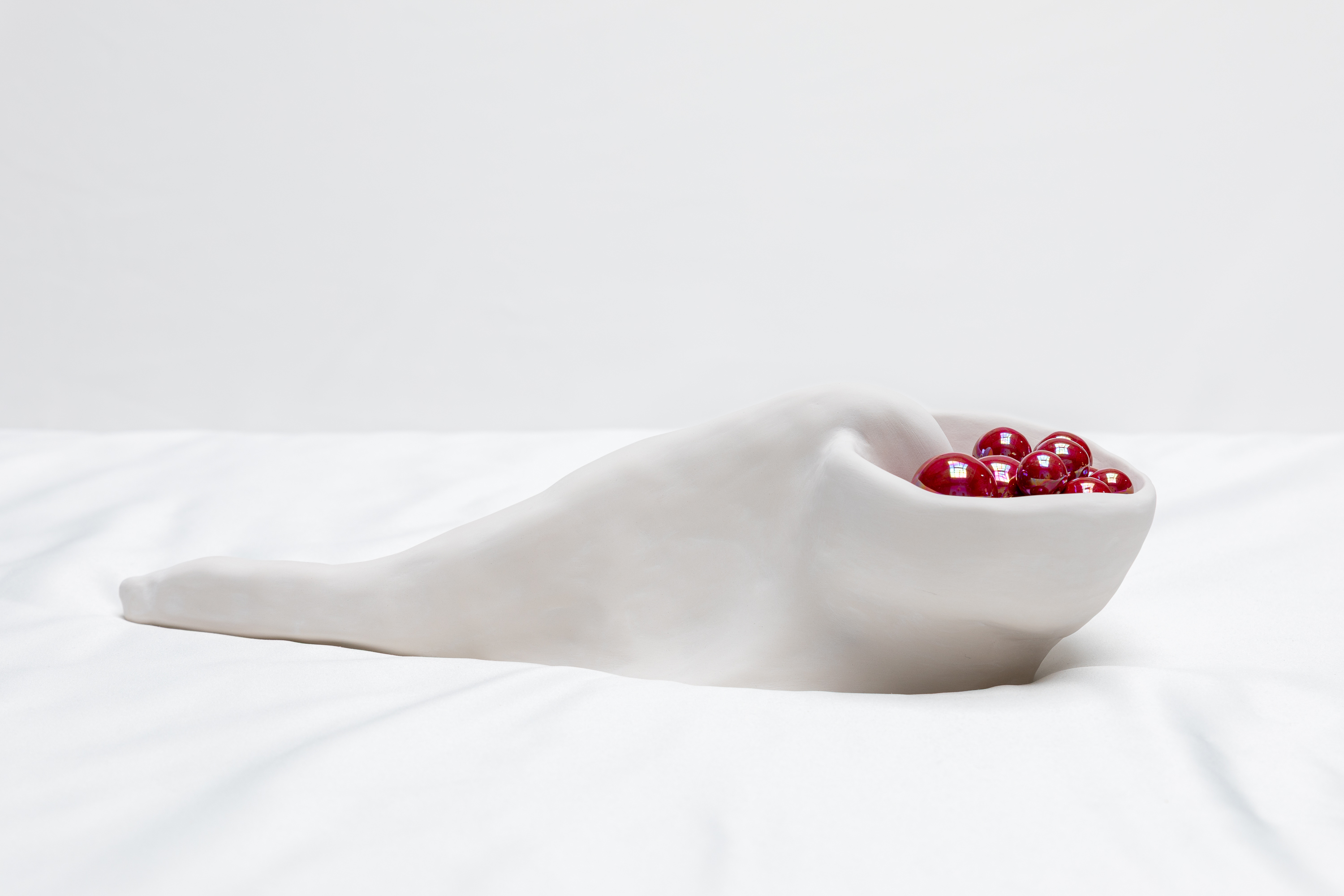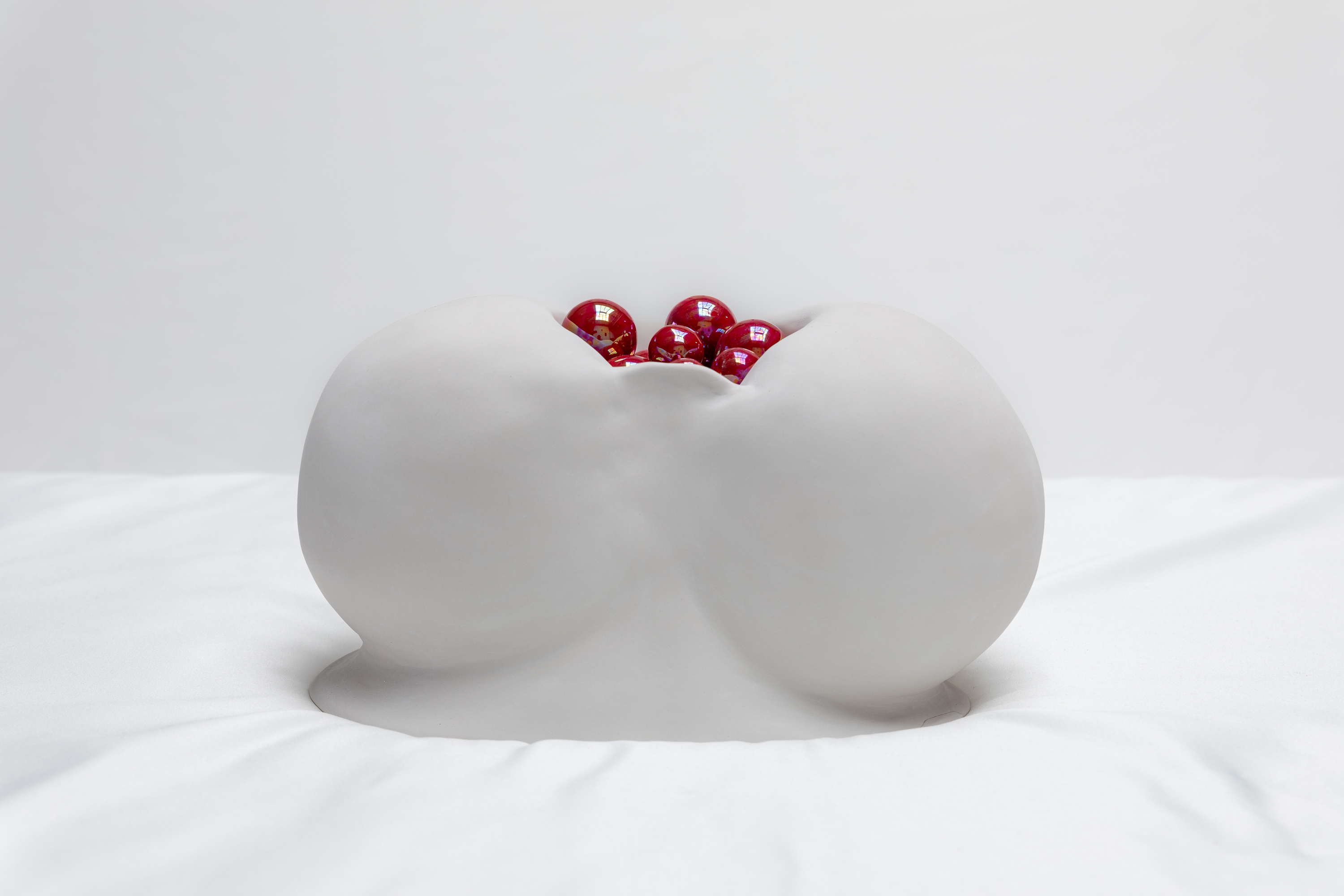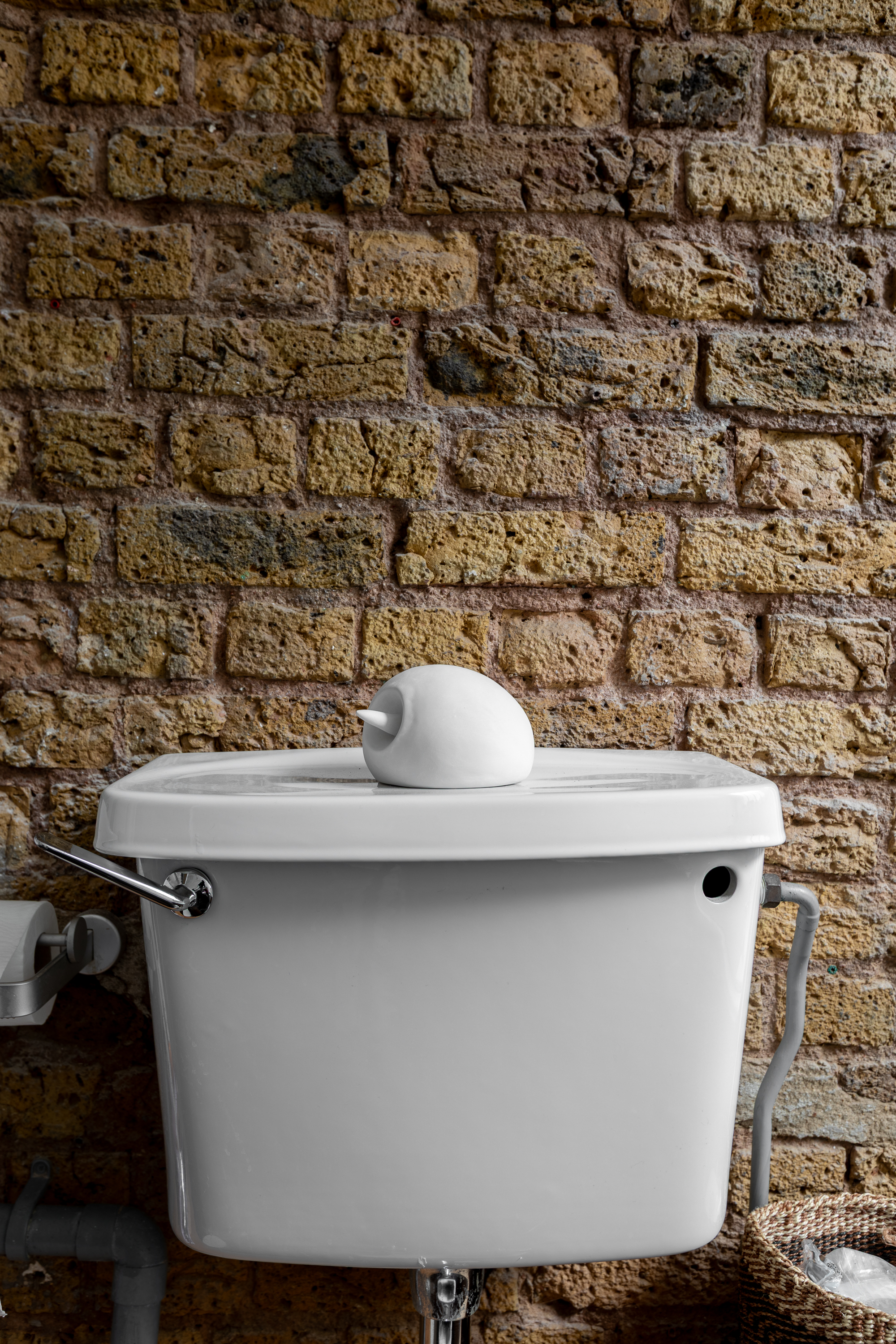solo show
12.09.25 - 19.10.25
Curated by Zeynep Koksaal Fanshaw Projects, London
I Would Like to Meet the Eye of the Sun and the Moon is Giuditta Vettese’s first solo show in London and presents an entirely new body of work spanning ceramic, metal, and marble sculptures alongside a video piece.
Within the depths of the body at a point where logic dissolves and sensation leads, our innate creative force lies. In I Would Like to Meet the Eye of the Sun and the Moon, Vettese is drawn inward, seeking to reclaim this vital life force. She invites us to join her in this internal search, as the glaring bronze surface of Visceral Pearl attracts the viewer toward its hollow, carved nipple. Within that darkness, the erotic lies dormant. Through sculpture and video, Vettese channels this energy as an alchemical force for grounding existence, encountering the other, and transcending the self.
In In The Heart of A Sphere series, Vettese’s creative process begins when the body exceeds its threshold, when matter meets spirit and the erotic ignites. Surging through her body, her portal, it guides her hands to soften, harden, and shape the clay. Ceramic forms emerge as vessels of orgas- mic release and their bodies turn outward and expose their delicate interiors. They pulse in and out, echoing the rhythms of the erotic energy. Left unglazed and raw, skin-like in their tactility, they recall the vulnerability of the body in pleasure. Within their motion lies a womb, cradling an iridescent red egg, a symbol of intuition and of life.
The egg, sacred and still, reminds us that to be born is also to be bound to death. We find ourselves suspended in a magnetic pull between the womb’s egg and the sphere – symbol- ising the eye – resting on Fool Moon. Vettese traces parallels between these forms, not only in their anatomical resemblance but in their shared influence over perception. She investigates the precar-ious process by which we come to know reality: first through sight, then more deeply through the sixth sense, intuition, an inner knowing that flows through the womb.
This duality of perception pulses through 2 Snakes Making Love, where the marble offers two faces. Neither is given primacy. As light pierces through the stone, both front and back become visible at once. Through a peephole, we witness two snakes knotted together, rising upwards and pressing inward, their bodies merged, unreadable. A sense of violence emerges through the image as it is caught between affection and threat. Vettese expands the erotic beyond its sexual, offering it instead as a force of transformation that resists singular definition. Vettese draws our attention to the moon’s subtle but powerful influence on the body: just as it pulls the tides, it stirs our inner waters, blood, emotion, desire. Across myth, folklore, and psychoanalytic thought, the moon has been linked to madness, emotional upheavel, repressed energies, particu-larly in relation to the feminine and the unconscious.
In Night on the Volcano drawings on paper, Vettese channels visions that arise during long, sleepless nights of insomnia, pulling her into timelessness and altered state of minds where time blurs. Rendered in dark, erratic charcoal and watercolour, the works echo the word lunatic that reflects an enduring cultural belief in the moon’s power to disturb the mind. Over time, this belief contributed to the pathologisation of the feminine, casting the cyclical rhythms of menstruation and reproduction not only as mysterious, but as threatening, characterising women as unstable, irrational, and emotionally volatile.
Unsettled by the projections of irrational fear on the female body, Vettese turns toward Medusa as the archetype, the emblem, of the monstrous feminine. Vilified across centuries, Medusa embodies the fear of unruly desire,of a seductive gaze that turns the viewer to stone. In her video work, Test 4_Medusa, Vettese inhabits Medusa’s many iconographical representations in images that have been expressed as both desired and demonised. Her own face twists and opens at the edge of form, pushed into thresholds of excess. Nine minutes become a summoning of the beast within. Vettese’s morphing face echoes the moment of orgasm, where pleasure brushes against death and the self begins to dissolve. The camera does not flatter. It reveals. It mirrors something raw and unfinished, like the unglazed ceramics. The frame ruptures and the gaze turns inward. Here, the erotic becomes a force not of seduction, but of resistance. Not of performance, but of transformation.
https://perediza.com/articles/meetingtheeyeofthesunandthemoon
https://www.salonemilano.it/it/articoli/mostre-autunno-2025-da-non-perdere













